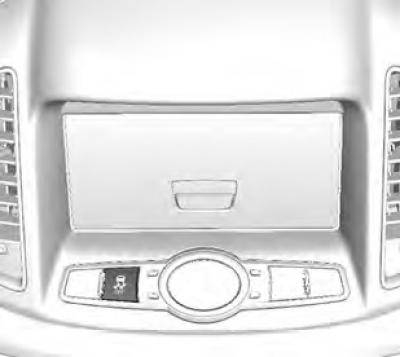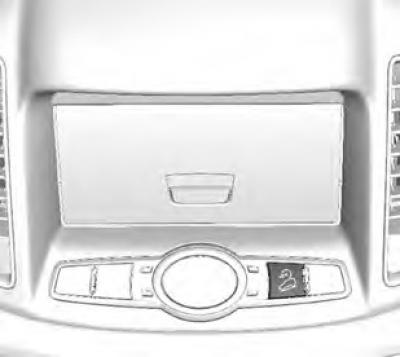Electronic stabilization system (ESC)
Attention: If you decide to install winter tires on your car, use only tires recommended by a car service.
The use of winter tires of the wrong type may adversely affect the performance of the stability control system.
For information on available winter tires and to select the appropriate type of tires, contact an authorized service center.
ESC is an electronic vehicle stabilization system and an additional driving safety system. It helps to avoid dangerous situations by braking the wheels or reducing engine torque. This ensures the stability of the vehicle in a situation where it becomes extremely unstable, for example, in conditions such as sharp cornering or fast lane changes. The ESC function is automatically activated when the vehicle enters an extremely unstable state. Under normal driving conditions, the ESC system does not work.
When the ignition is turned on, the ESC activity indicator and the system disable indicator light up. They turn off after about 4 seconds.
The ESC activity indicator flashes while this system is running. A permanently lit indicator indicates a malfunction in the system. In this case, you need to contact a car service as soon as possible.
See Electronic stability control indicator (ESC).
Attention: The activation of the ESC activity indicator indicates a malfunction of the ESC system. Contact a service station immediately for assistance.
Power brake function
When the ESC system recognizes an emergency requiring heavy braking, it automatically increases the brake pressure on the wheels.
Active rollover protection function
This function is part of the ESC system. If the vehicle becomes extremely unstable while driving, this function helps the vehicle maintain normal stability.
Traction control system (TCS)
The traction control system prevents the drive wheels from spinning, regardless of road conditions and tire grip. As soon as at least one drive wheel begins to slip, engine power is reduced and the spinning wheel slows down. This improves vehicle handling and drive efficiency, especially when driving on snow or ice, or on wet or slippery roads.
Trailer stabilization function (TSA)
It is difficult to manage road trains wagging on the go. This feature detects wobble and reduces the speed of the road train until the sway stops. The reduction in speed is achieved by reducing the engine torque and increasing the pressure in the brakes of all wheels.
Hill start assist (HSA)
This system helps to prevent rolling backwards when driving uphill.
If the vehicle is parked uphill, pressing the accelerator pedal and releasing the brake pedal will continue to apply the brake for approximately 2 seconds.
ESC off button

The ESC system can be turned off by pressing a button "ESC OFF", located in the center of the dashboard.
Pressing the ESC off button again while the ESC system is off (ESC off indicator is on) causes the system to resume operation, which is accompanied by the shutdown of the ESC off indicator on the instrument panel.
Attention: Activating the ESC system to correct the vehicle's stability reduces the vehicle's speed and allows more attention to be paid to the road.
The ESC system is the only auxiliary device in the car. When the parameters of the movement of the car go beyond the physical limits, it loses control. Do not rely entirely on this system. Follow the rules of safe driving.
While operating the ESC system, you may hear some noise or feel vibration from the brake pedal or other relevant systems. This may be caused by pressure changes in the respective systems.
Downward assist (DCS)

When driving down a steep descent, this function allows you to drive at low speed without using the brake pedal, allowing you to focus on steering. This handy feature is only for driving on a steep downhill slope.
To activate the downhill assistance system, press the appropriate button in the center of the instrument panel. Pressing this button makes the system ready. The green downhill assist activity indicator lights up. This indicator flashes all the time this system is operating.
To turn off the DCS, press the DCS switch button again. The DSC activity indicator will turn off.
A flashing yellow downhill assist system not ready indicator indicates that the system is not ready for operation, and a steady light on this indicator indicates a malfunction in the system.
See Downward assist indicator.
Caution: The downhill assist system not ready warning light comes on to indicate that the downhill assist system is malfunctioning. Contact a service station immediately for assistance.
Conditions for activating the downhill assist system
1. You must press the down assist button (the green system activity indicator will light up).
2. Descent with a slope of a certain value.
3. Movement at a speed not exceeding 50 km/h. (The downhill assist system does not work at speeds over 50 km/h, even if the DCS switch button is pressed. The system will reactivate as soon as the vehicle speed drops back to 30 km/h after exceeding 50 km/h.)
4. The accelerator or brake pedal is not depressed. (The downhill assist system does not engage when the accelerator or brake pedal is depressed.)
Attention: The downhill assist system is designed for steep descents in off-road conditions.
Improper use of the DCS system may result in failure of the braking system or the ESC system. Do not use the downhill assist system on normal roads.
During the operation of the down assist system, severe vibrations or noises in the brake system may occur. This is fine.
